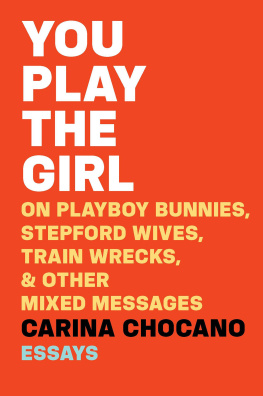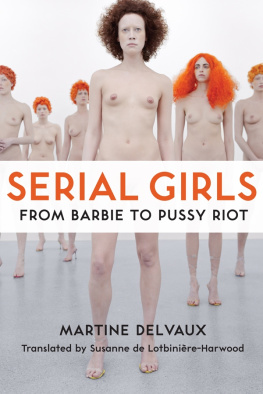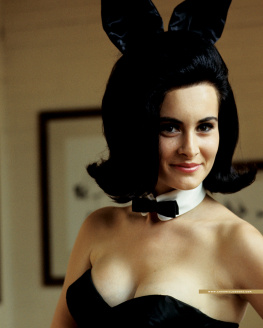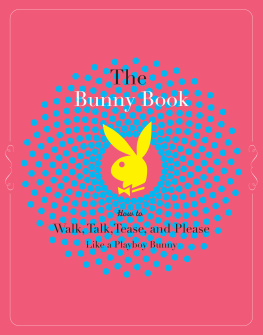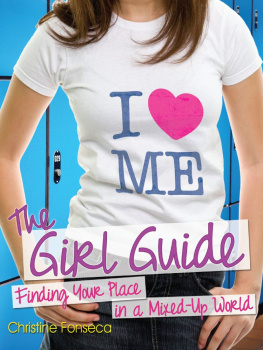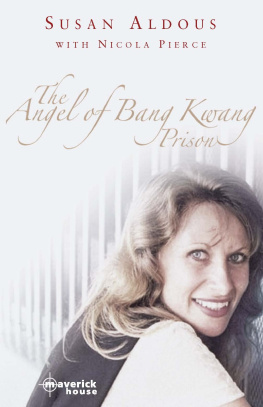Copyright 2017 by Carina Chocano
All rights reserved
For information about permission to reproduce selections from this book, write to or to Permissions, Houghton Mifflin Harcourt Publishing Company, 3 Park Avenue, 19th Floor, New York, New York 10016.
www.hmhco.com
Library of Congress Cataloging-in-Publication Data is available.
ISBN 978-0-544-64894-4
The Ingenue Chooses Marriage or Death, Bad Girlfriend, The Kick-Ass, Surreal Housewives, Celebrity Gothic, A Modest Proposal for More Backstabbing in Preschool, and Girls Love Math first appeared in a different form in the New York Times Magazine. Portions of Real Girls and Big Mouth Strikes Again appeared in the Los Angeles Times, and a different version of Thoroughly Modern Lily was first published in Salon.
The author is grateful for permission to reprint lines from Miley Cyrus Is Just Trying to Save the World by Allison Glock (2015), courtesy of Marie Claire, Hearst Communications, Inc.
Cover design by Mark R. Robinson
e ISBN 978-0-544-64896-8
v1.0717
For Kira
In a society where values changed frequently, where fortunes rose and fell with frightening rapidity, where social and economic mobility provided instability as well as hope, one thing at least remained the samea true woman was a true woman, wherever she was found. If anyone, male or female, dared to tamper with the complex of virtues that made up True Womanhood, he was damned immediately as an enemy of God, of civilization, and of the Republic. It was the fearful obligation, a solemn responsibility, which the nineteenth-century American woman hadto uphold the pillars of the temple with her frail white hand.
Barbara Welter,
The Cult of True Womanhood: 18201860
The title women and fiction might mean, and you may have meant it to mean, women and what they are like; or it might mean women and the fiction that they write; or it might mean women and the fiction that is written about them; or it might mean that somehow all three are inextricably mixed together and you want me to consider them in that light.
Virginia Woolf, A Room of Ones Own
From the time I was 11, it was, Youre a pop star! That means you have to be blonde, and you have to have long hair, and you have to put on some glittery tight thing. Meanwhile, Im this fragile little girl playing a 16-year-old in a wig and a ton of makeup... When I wasnt on that show, it was like, Who the fuck am I?... My dream was never to sell lip gloss. My dream is to save the world.
Miley Cyrus,
on playing Hannah Montana, in Marie Claire
Introduction
My daughter, Kira, has heard bedtime stories almost every night since she was born. By the time she turned eight in 2016, she was surprisingly up to date on early Peanuts comics, the collected novels of Frances Hodgson Burnett, Spider-Man cartoons from the sixties, the existential adventures of Frog and Toad, the collected oeuvre of Roald Dahl, Star Wars through the ages, mother-and-daughter versions of the movie Annie, and Ghostbusters past and present. I didnt set out to lead her on a tour of my literary coming-of-age, nor did I anticipate, on revisiting them, that I would recall the stories Id loved as a kid more vividly than actual events from my childhood. But thats exactly what happened. At times, Ive questioned my motives. What did I think I was doing? What were my intentions, exactly? Was I introducing things to her, or introducing her to me? What if I was trying to introduce myself in her somehow, via her eyeballs and ear canals, like an airborne brain spore? Could that still be considered educational, or was it just creepy? Was I like every other parent, or like a parody of a hipster caregiver in a Portlandia sketch? Was that just how culture works?
Once, when Kira was five, I presented her with a beautiful, too-expensive illustrated copy of Lewis Carrolls Alices Adventures in Wonderland, and I accidentally let it slip that I wasnt sure whether Id read it before. She smelled a ratprobably because I was, in fact, proffering a rat. For one thing, wed already established a system of recommendation rooted in unregenerate nostalgia, not pedagogy. For another, shed already seen the animated Disney movie and read Walt Disneys Alice in Wonderland, the Little Golden Book based on the movie, and she hadnt liked them any more than I had at her age. But I was curious. I had the pressing feeling that the original had something urgent to tell me. So, I insisted, and Kira relented, but a few pages in, she shut me down and demanded I read Sleeping Beauty instead.
The version of Sleeping Beauty we owned also happened to be the Little Golden Book version, Walt Disneys Sleeping Beauty, the one based on the movie featuring a Goth-Barbie Princess Aurora, the silly-goose fairies Flora, Fauna, and Merryweather, and the sophisticated supervillain, Maleficent. Kira was crazy about Sleeping Beauty. She could not get enough. We read the story every single night at bedtime, sometimes twice a night, for a year. She memorized it by heart from start to finish and insisted that I pause just before the part where Maleficent crashes the christening, so she could recite the lines. Every night, Kira gravely pronounced Maleficents fatwa on the princess, followed by her parents alarmed reactions.
Before the sun sets on her sixteenth birthday, she shall prick her finger on the spindle of a spinning wheel, and d-i-i-i-i-e-e! (she said in Maleficents voice).
Oh, no! (she said in the queens voice).
Seize that creature! (she said in the kings voice).
It was fun.
Her dad, Craigs, theory was that Kira loved Sleeping Beauty because it ends with the cursed princess Aurora reuniting with her parents after spending sixteen years in hiding with the fairies. Being welcomed home by her father, King Stefan, and her mother, the queen, who is nameless but alive (which is more than can be said for most princesses mothers), was the real happy ending. This made sense to me; five-year-olds want nothing more than to be autonomous and free, but also safe, cherished, and lovedjust like adults. Still, I wasnt satisfied. I kept fishing for some stunning preschool insight, some apocalyptic nugget of truth that would reveal all. Like, why did she like Sleeping Beauty so much? What about her did she rate so highly above the other princesses? I liked to imagine that it had something to do with her ultimately defying a death sentence, or maybe that Kira was unconsciously attracted to the power of the rebel fairy. But my daughters answer was always the same: Sleeping Beauty was the prettiest. And it was true. She was. And really, what else was there to go by in a heroine? She had the longest, blondest, most flowing hair. Her dress had the fullest skirt and the most sharply drawn-in waist. Other than that, she was young, innocent, passive, naive, vulnerable, submissive, oppressed, kind to animals, handy with a broom, persecuted, and exploitedwhich is to say indistinguishable from the rest. An impotent pawn in a power struggle between the king and an evil fairy or wicked queen, who was always defeated in the end. She spoke very little, and when she did, she did so softly, never stridently. She sang sweetly, worked cheerfully, and suffered nobly and exquisitely. Were taught since birth to associate prettiness with goodness and worth. Its a hard lesson to unlearn. When I was little, I liked Sleeping Beauty best because she was the prettiest, too; because I recognized her as the feminine ideal. I understood that she was not descriptive so much as prescriptive, that she was not so much the hero of her own story as the grail.
After Kira fell asleep that night, I finished reading
Next page
